Editor’s note: Dr. Nial Moores is director of Birds Korea and an authority on gulls. In this guest post, written exclusively for shanghaibirding.com, Moores describes the three widespread Herring-type gulls of East Asia. One of these is Taimyr Gull Larus (heuglini) taimyrensis. Moores points to the photos above to support the recognition, contested by some, of Taimyr Gull as a separate taxon. The panels show two Herring-type gulls, both adults, photographed on the Huangpu River in downtown Shanghai in March. The panels at left show Mongolian Gull Larus mongolicus. The right-hand panels show Taimyr Gull. The Mongolian is in full breeding plumage, as evidenced by its spotless white head. The Taimyr, by contrast, still shows streaking on its head, an indication that it has not yet attained full breeding plumage. The Taimyr shows as well upperparts darker grey than those of the Mongolian. These differences, Moores writes, show that the birds in question are two species.
Experts agree that Taimyr Gull is distinctive; what they disagree on is how to classify it. The IOC does not even recognize taimyrensis as a taxon, let alone a full species. Moores laments this state of affairs. The disagreements, Moores maintains, would melt away if more were known about these gulls. Moores wrote the post, and I am proudly publishing it, with a view toward fostering new knowledge. Birders, fear not the Herring-type gulls! Learn here from Moores, arm yourself with knowledge, and record and spread your observations. — Craig Brelsford
by Nial Moores
for shanghaibirding.com
In his post “Loons Near Pudong Airport,” Craig Brelsford posted an image of a Slaty-backed Gull and of a wing-tagged gull, referring to all the gulls in the background as Larus vegae vegae or Larus vegae mongolicus. In a public comment, I asked about Craig’s omission of Taimyr Gull Larus (heuglini) taimyrensis, leading to an exchange of e-mails between us and an invitation by Craig to post about this taxon. Below, therefore, are a few thoughts on Taimyr Gull, as depicted in Craig’s images taken 18 March on the Huangpu River in Shanghai, and a brief explanation of why many gullers no longer consider taimyrensis, vegae, and mongolicus to be the same species.
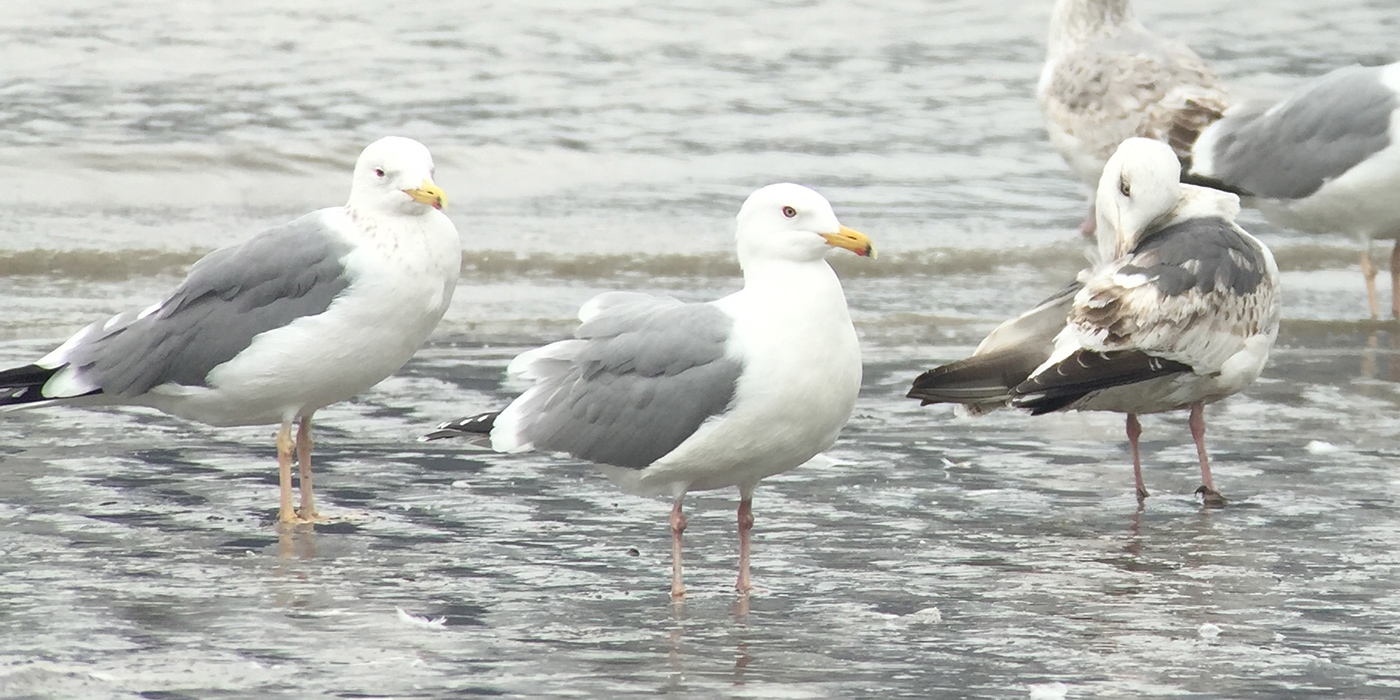
Visit a local river mouth, coastal wetland, or beach in winter, and the chances are high that you will see gulls. Some of the species found in East Asia, such as the Black-headed Gull Chroicocephalus ridibundus and Mew (or Common) Gull Larus canus, have a very wide geographic range and should be as familiar to domestic birders as they are to visiting birders from Europe and parts of North America. There are also a few gulls which are much more likely to stand out as different in structure and plumage. These include Relict Gull Ichthyaetus relictus and Saunders’s Gull Chroicocephalus saundersi. Both are highly distinctive East Asian “specials”; both are dependent on tidal flats in winter; both are globally Vulnerable; and both are confined entirely to this region and lack any counterpart elsewhere in the world (compelling evidence of the importance of the East Asian tidal flats to biodiversity).
And then there is a group that seems to fit neither of these categories: the so-called “Herring-type” gulls. There are three main Herring-type taxa found in this region, which the IOC Checklist effectively treats as one and the Birds Korea Checklist (Moores & Kim 2014) treats as three species: the Mongolian Gull Larus mongolicus, the Vega Gull Larus vegae and the Taimyr Gull Larus (heuglini) taimyrensis. All three of these gulls are widespread in this region in winter and can even be locally abundant. Importantly too, all three also have some kind of counterpart in other, better-researched regions. The Mongolian Gull in many ways looks most similar to the Caspian Gull Larus cachinnans of western Eurasia—most especially in that adults can look almost white-headed in mid-winter (at a time of year when more northern-breeding Herring-type gulls usually have densely spotted or streaked heads) and in their first-winter plumage. The Vega Gull looks more similar to the European Herring Gull Larus argentatus or the American Herring Gull Larus smithsonianus. As adults, all three have heavily streaked or mottled heads in non-breeding plumage, and all three are typically pink-legged at all ages (though with local exceptions—including in East Asia the paler-backed, yellow-legged individuals sometimes considered to be birulai, a subspecies of Vega Gull).
There are many similarities between Vega, European Herring, and American Herring Gulls in juvenile and immature plumages too, including, e.g., obvious notching on the tertials in the vast majority of juveniles and first-winters (first cycle), and in flight an obvious paler area on the inner primaries—often called a “window” by gullers—contrasting with a darker outer wing. The Taimyr Gull instead looks closest to the Lesser Black-backed Gull Larus fuscus of northern Europe in that adults are quite dark grey above and can have bright-yellow legs. The juvenile upper wing of both species also looks rather similar too, in that this pale area across the inner primaries is less obvious than in Vega or either of the Herring Gulls, while both Taimyr and Lesser Black-backed Gulls also have darker secondaries and a dark band across the greater coverts (though less striking in Taimyr than in Lesser Black-backed Gull).
NOTES ON TAIMYR GULL
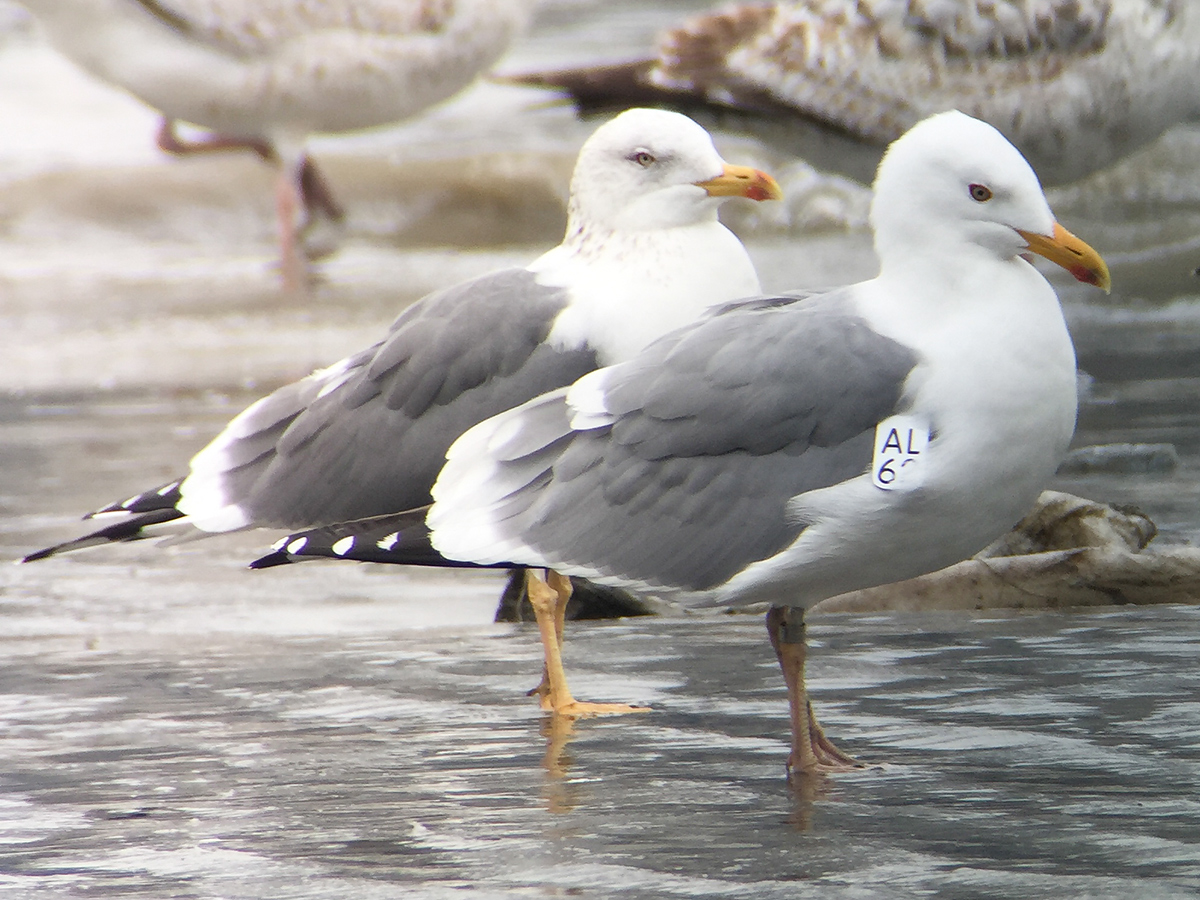
In Craig’s image above from the Huangpu River in Shanghai, it is easy to see that at more or less the same angle, the upperpart grey of the adult to the rear is darker and a little slatier-looking than that of the wing-tagged gull in the foreground. A few other differences should be easy to pick out. One is the colour of the bare parts. The adult to the rear has extremely bright yellow legs and a vividly coloured bill, with the red on the gonys unusually bleeding up onto the upper mandible. The bird in the foreground, known by that wing tag to be from the breeding grounds of Mongolian Gull, has much weaker yellow-pink tones to the legs and the red confined to the lower mandible.
Leg colour can change seasonally, and bill markings change with age and apparently season too, but structure is more constant. The rear bird has a thicker-based bill and thicker-looking legs and also longer-looking wings, with at rest a rather more obvious extension of the primaries beyond the tail than shown by the Mongolian Gull in the foreground. There is another obvious difference: the streaking on the nape of the bird to the rear. Extent and density of head streaking is also a feature that changes seasonally and individually in gulls. What is important here is that on the same date, two apparently similarly aged gulls show several marked differences from each other, including that one of them still has a lot of streaking on the hind-nape and some grey wash near the eye; while the other, the Mongolian Gull, is already unstreaked and white-headed.
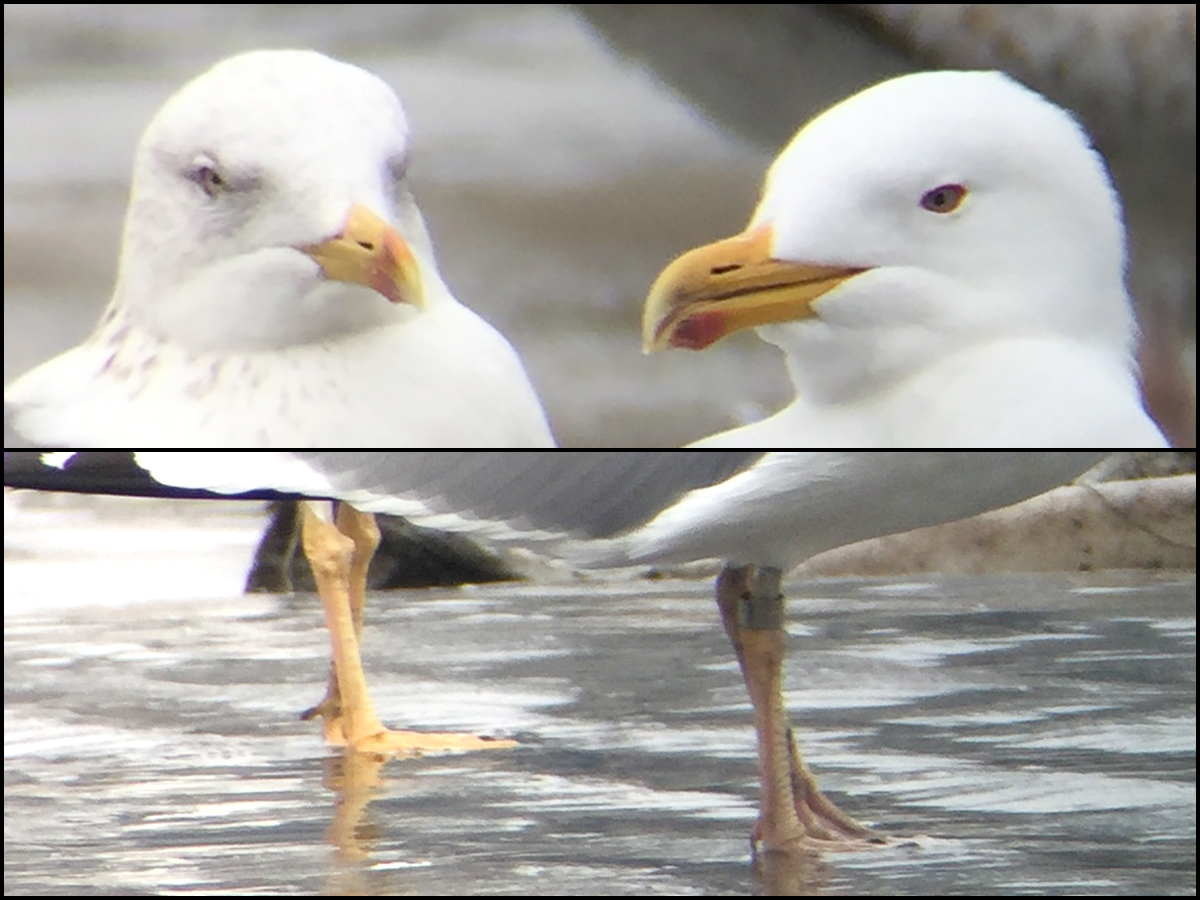
The combination of these differences (in structure, plumage tone, coloration of the bare parts, and head streaking) gives me confidence that these are adults of two species. And to be sure, while the adult Mongolian Gull in the foreground could perhaps be overlooked as a dark-looking American Herring Gull if seen in North America (where leg colour is more variable than in much of Europe: see here) or a big Caspian Gull if seen in Europe, an adult like the one just behind, with such yellow legs and such grey upperparts, would never be identified by any serious birder in Europe or North America as a Herring Gull. This bird would much more likely be identified as a Lesser Black-backed Gull instead—even if an odd-looking one. Notably, although the Lesser Black-backed Gull is largely restricted to breeding and wintering in Europe (with small numbers occurring in North America), the kind of gull in the image is quite common in East Asia. Here in Korea, I have seen several “pure” flocks of 40 to 50 birds looking just like this in March and April, and I counted a single flock of several hundred in Rudong a couple of Septembers ago. And often adults like these are accompanied by immatures of different ages—almost all of which after years of observation similarly fit neatly into an expected pattern of structure and plumage. Yes: The adult bird standing next to the Mongolian Gull is what an increasing number of birders now call Taimyr Gull.
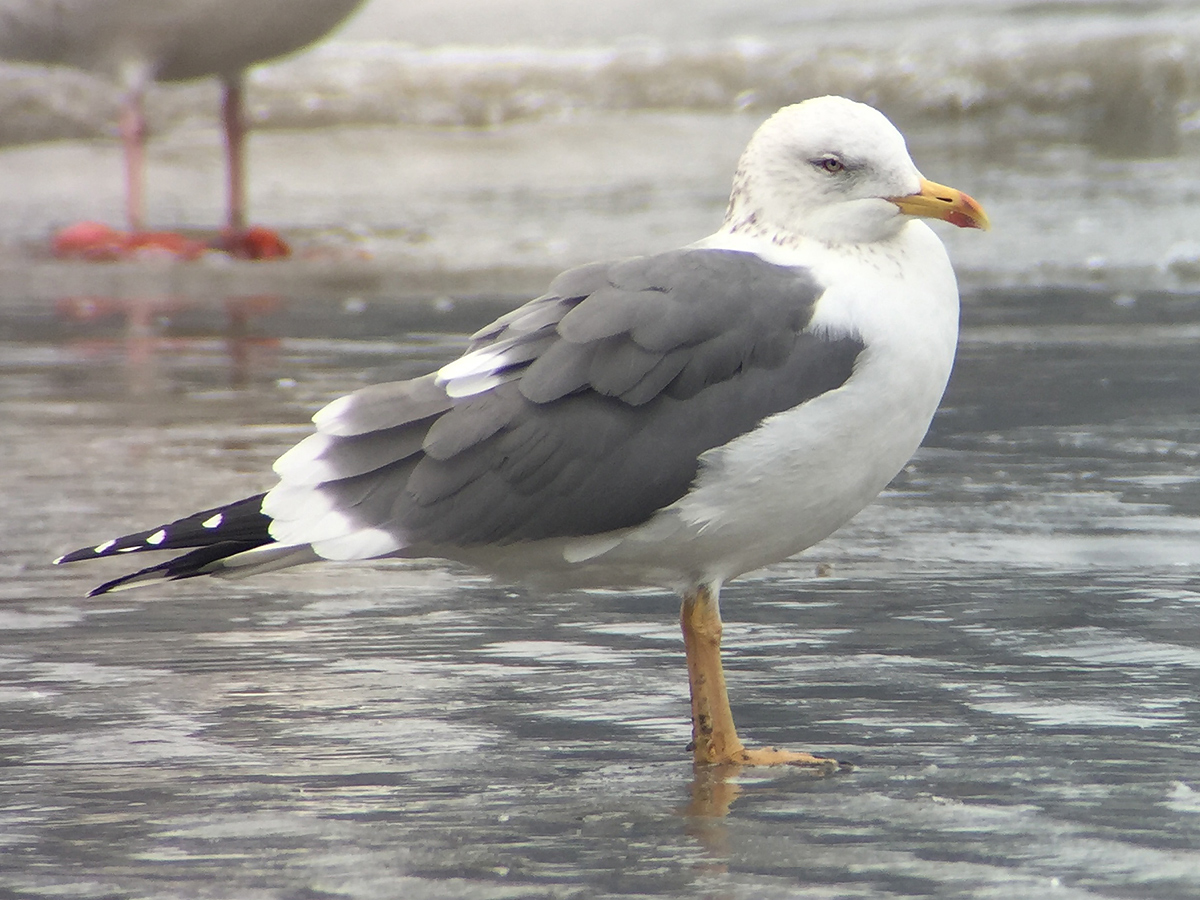
The Taimyr Gull is a far northern-breeding species (confined, as far as we know, to breeding only on the Taimyr Peninsula: see van Dijk et al. 2011). Most adults do not attain full breeding plumage with gleaming white heads and bright bare parts until the middle or end of April. The most direct route from the Yellow Sea to their breeding grounds entails a flight of about 4,500 km (2,800 mi.) across land and environments which are hostile to gulls all the way. These gulls should not reach their breeding grounds too early, of course, either, because much of the Taimyr Peninsula will still be under snow and ice until the middle of May—a cold and deadly place for a gull until the summer thaw begins. Therefore, many adult Taimyr Gulls remain in the Yellow Sea until late April and early May, acquiring their full breeding plumage late before migrating rapidly, perhaps more or less non-stop, up to the northwest.
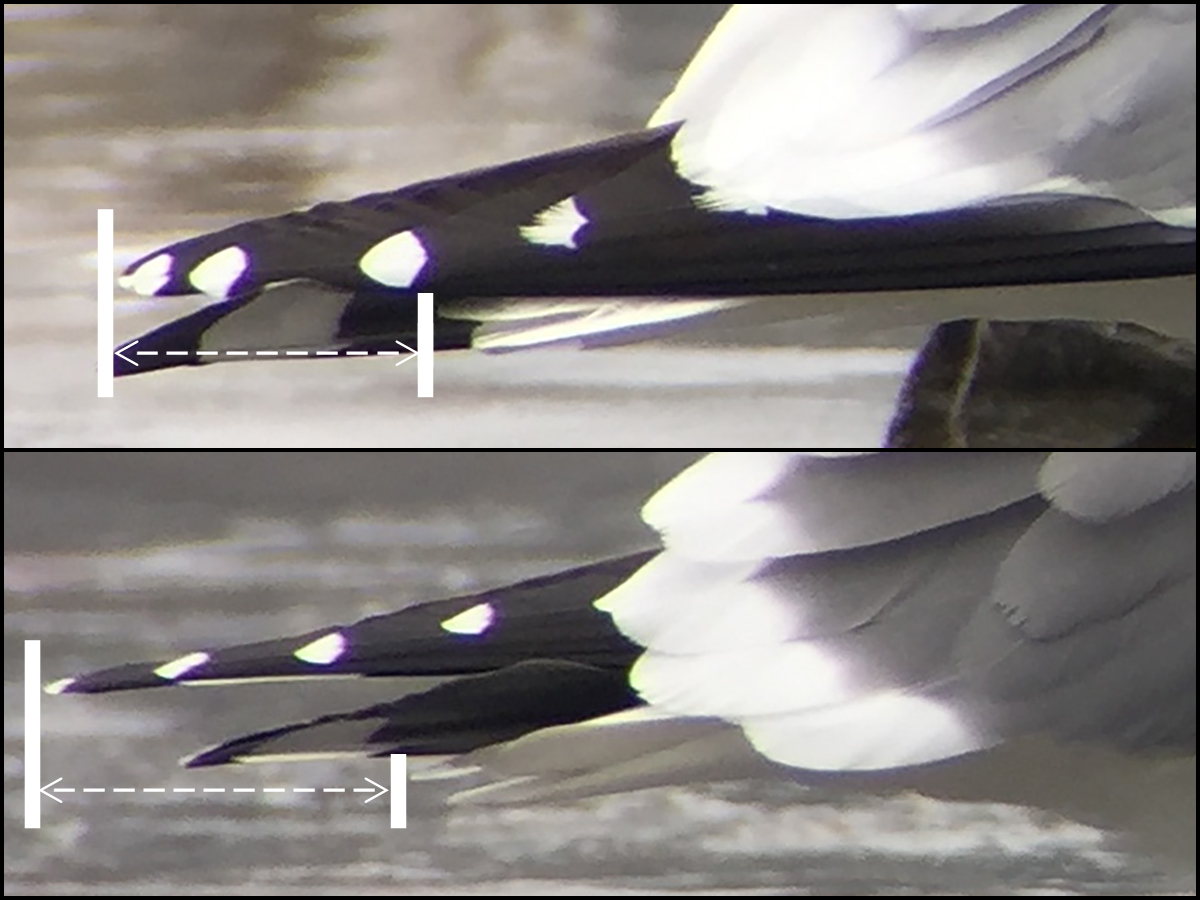
It is at least in part the huge distance that Taimyr Gulls need to fly over land between their breeding grounds and the rich fishing grounds of the Yellow Sea and south China coast that requires them to be so long-winged; and the brevity of the Arctic summer also determines when juveniles can start to moult into their next plumage and how much of their plumage they then need to moult. As in Lesser Black-backed Gull and Heuglin’s Gull Larus heuglini (the latter for now listed by the IOC as Larus fuscus heuglini, i.e., a subspecies of Lesser Black-backed), it appears that this moult is much more extensive in Taimyr Gull than in Vega, American Herring, or European Herring Gull.
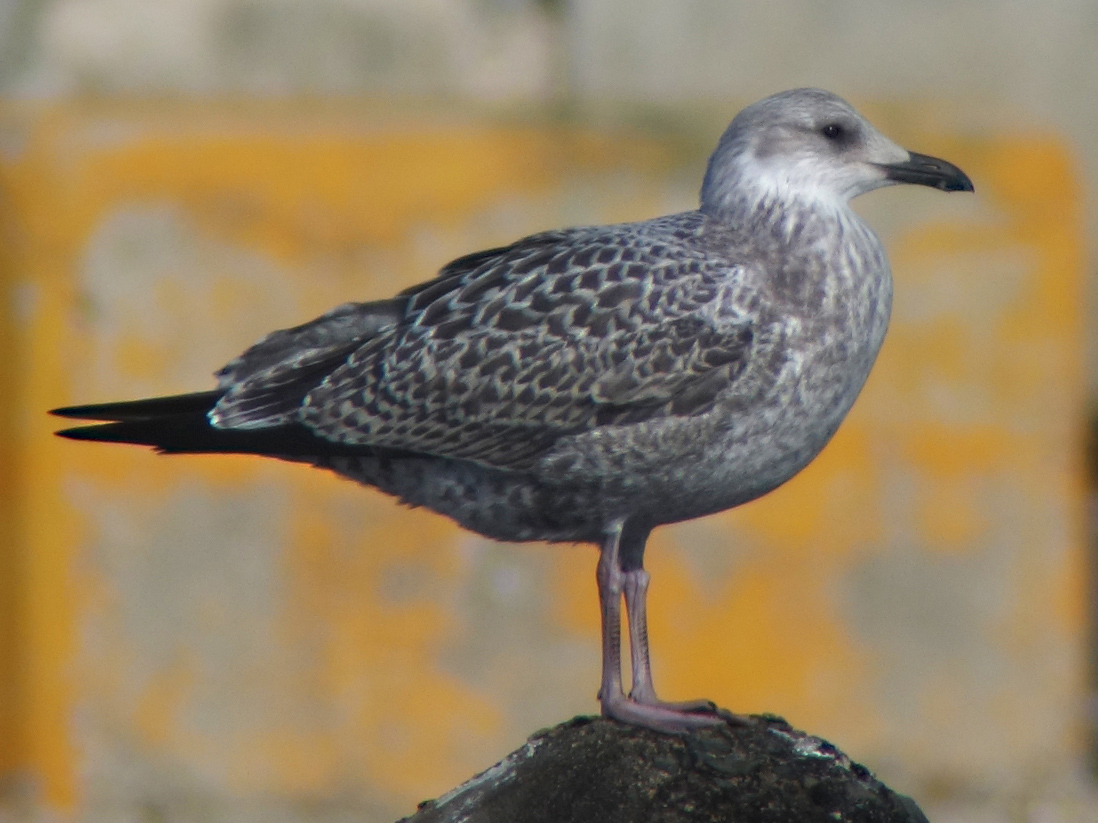
Their first great transformation—from brown juvenile into a grey, white, and black first-winter—starts quite late, however. Most Taimyr Gulls, like Vega Gulls, are in juvenile plumage through December. Sometime in January or February of their second calendar year, Taimyr Gulls begin a rapid moult, with many by the end of February starting to look white-headed, and some showing patches of dark adult-type grey plumage in the scapulars and mantle by March and especially by April. For one or two months (from mid-February to mid-April), these young Taimyr Gulls can then start to look quite similar to young Mongolian Gulls, a few of which also seem to start to show some adult grey in their upperparts. The upper wing still looks different, though (especially the pattern on the inner primaries), and among the other differences visible on birds on the ground is that the base grey on the scapulars is quite dark; and the anchors and barring that overlie this grey area are much coarser than in Mongolian Gull. Most Taimyr Gulls have very coarse streaking on the nape, too. And all this new plumage, being so new, looks really fresh. They therefore do not have worn-out looking tertials like most Mongolians, especially locally bred birds. Of interest perhaps to those who enjoy studying gulls, in my 25 years in this region, and although both second-calendar-year Taimyr (regularly) and second-calendar-year Mongolian (sometimes) can show adult-type grey, I have not yet seen a single second-calendar-year Vega Gull in March or April with obvious adult grey in the plumage.
MONGOLIAN GULL, A MORE SOUTHERLY BREEDER
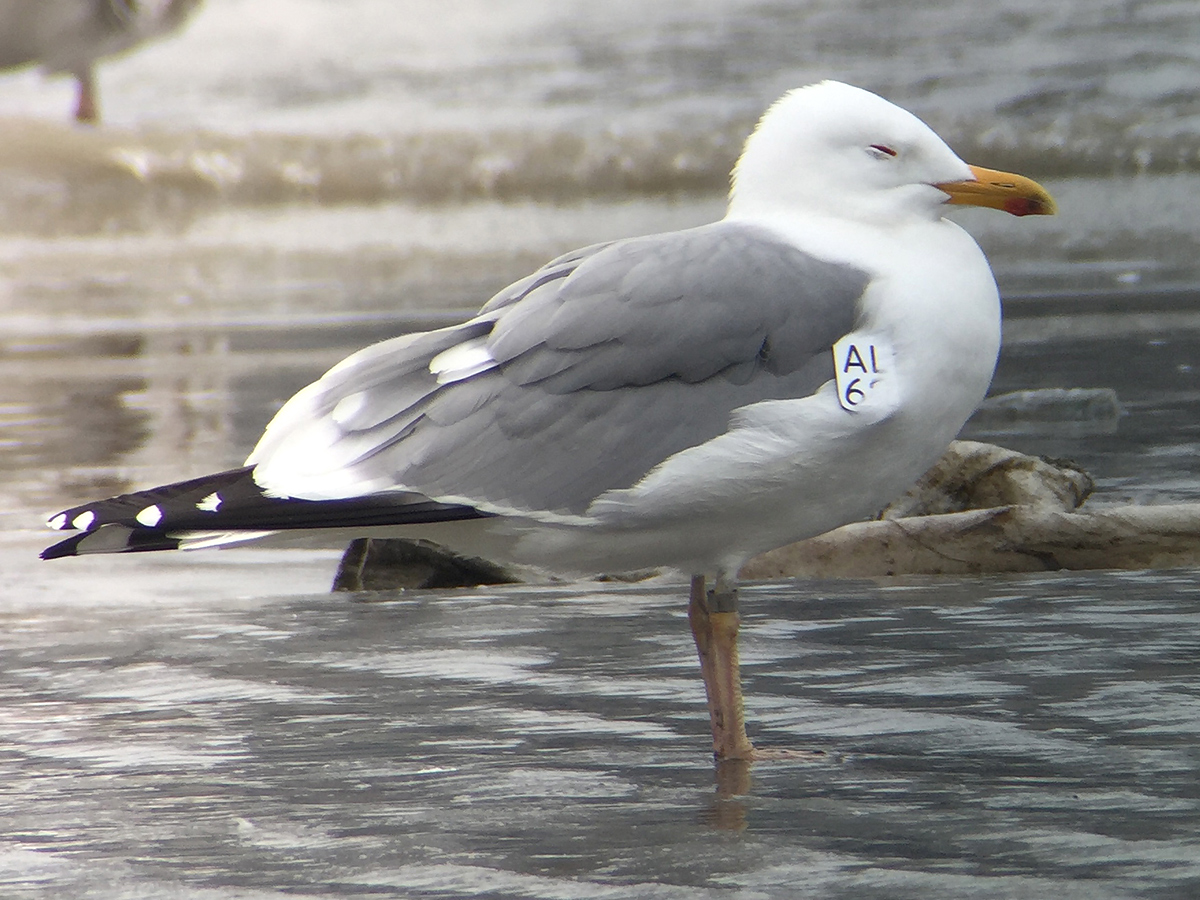
The Mongolian Gull (as far as we know) has a rather wider breeding distribution than Taimyr Gull and probably than Vega Gull. Mongolian is the species that breeds, or used to breed, north to Lake Khanka on the Sino-Russian border, northwest at least to Lake Baikal, and southeast to our region. This, after all, is the Herring-type gull that nests alongside Black-faced Spoonbills and Chinese Egrets on Yellow Sea islands in Korea and presumably very locally in China too. Breeding further south, their breeding grounds thaw earlier than those of the Taimyr Gull, which in turn means that Mongolian Gulls have to progress into breeding plumage much earlier than either Taimyr or Vega Gull.
By mid-February many adults are white-headed, and many are already prospecting nest sites. Here in Korea, by March many are paired up, giving their distinctive nasal braying courtship calls; birds can be sitting on eggs in April; and many of the young will have fledged by early June—this is before many Taimyr and Vega Gulls will have even started egg-laying! Mongolian Gulls (at least those born and raised in Korea) retain their dark brown juvenile plumage only until August or early September, before they start to moult rapidly into a quite pale-looking first-winter plumage. And by January, because this plumage is already several months old, young Mongolian Gulls already show a lot of wear, with extensive pale areas across the inner primaries contrasting with darker internal markings, which sometimes suggest black golf clubs.
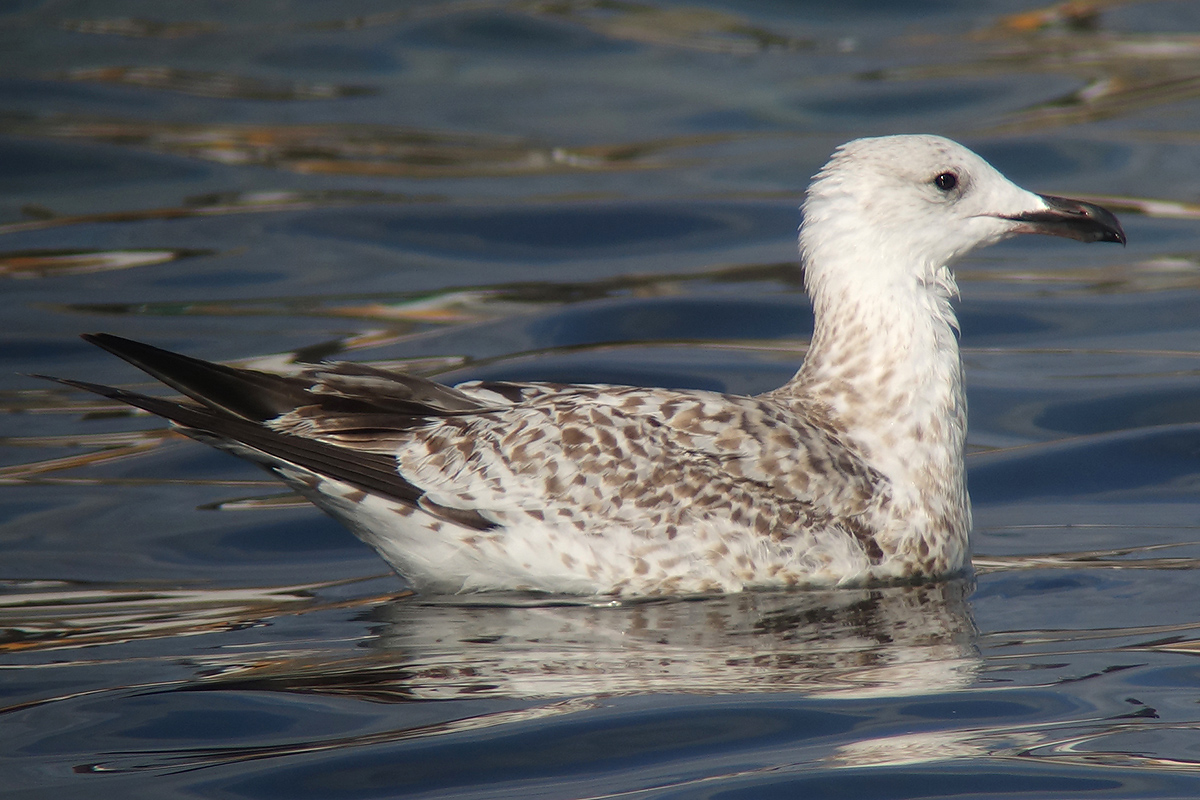
Look carefully at the edges of the tertials, too: These often have uniquely frayed edges in mid-winter and early spring. These pale young Mongolian Gulls are the birds that look a lot like young Caspian Gulls, and are presumably much of the reason why Malling Olsen and Larsson (2004) treated Mongolian Gull as a subspecies of Caspian rather than lumping the taxon with Vega. They just look so different. In this region, we also get to see these young Mongolians accompanying adults on the tide-line and also often in freshwater habitats—along rivers and in lakes. This is an ecological niche they occupy which is largely avoided by both Taimyr and Vega Gulls. This is therefore the large gull of the Han River in Seoul and the Taedong in Pyongyang; and presumably of floodplain wetlands of the Yangtze River (and possibly of the Huangpu River in downtown Shanghai). As early as January, many of these young birds are already largely white-headed, with beautifully patterned scapulars (pale grey bases with dark rows of anchors), and often pale breasts and bellies: beautiful and strikingly different from either Taimyr or Vega Gulls at this time of year—both of which in January (as described above) are still mostly washed brown above and below, with heavily patterned heads and all-dark bills.
Structurally too, most Mongolian Gulls can be pretty obvious, being rather bulkier and more powerful-looking than Vega or Taimyr Gulls: a modest counterpart to the Great Black-backed Gull Larus marinus of the North Atlantic. And just like Great Black-backeds, Mongolians are often aggressive too. They sit in wait near to eagles on the Han River, and on multiple occasions I have seen them try to rob fish from Common Mergansers and harass groups of dabbling ducks. Here in Korea, they are often found patrolling rivers near flocks of roosting Baikal Teal, and at least a half-dozen times I have watched one swoop down to whack a hapless duck on the back of the head. I have seen this kind of aggressive behaviour only by birds that show multiple features of Mongolian Gull and never by birds showing multiple features of Vega or Taimyr Gull. And if you live and bird in eastern China, you have probably seen similar behaviour too, right?
VEGA GULL: NORTHEAST ASIAN BREEDER
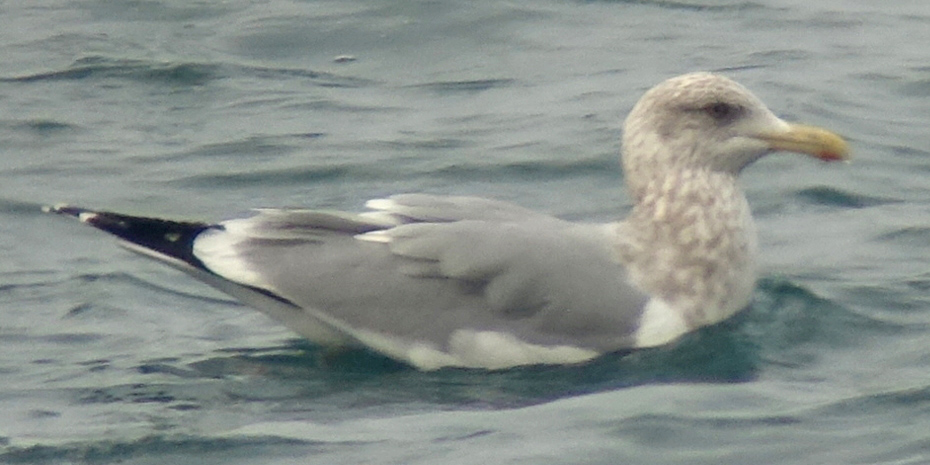
The third of these Herring-type gulls is Vega Gull. From experience in Korea and southwestern Japan, I would be surprised if birders could find many Vega in a muddy river-mouth in Shanghai—especially on a date as late as mid-March. For at least on this side of the Yellow Sea, the Vega Gull is much more a species of fishing harbours, mariculture platforms, and sandy beaches. They do occasionally show up on rivers, but they are primarily a coastal species, strongly associated with, and perhaps now even dependent on, human fisheries when away from the breeding grounds. Much of their breeding range lies to the far northeast of Asia, not to the west or northwest. As a result, their migration and moult appear to be more staggered than that of Taimyr or Mongolian Gulls. After all, they have the option of remaining close to the coast and to fishing harbours along most of their migration route, with the potential to stop off en route to feed when they need to. This is presumably one reason why there are not so many Vega left in the Yellow Sea by mid-March. Many have already migrated out of the Yellow Sea and through the Korean Strait past Busan in early March, with much of the return migration back into the Yellow Sea in November (when thousands can be seen around fishing boats) and in December.
It is not only habitat and behaviour that helps in the identification of Vega Gull. Most adults are easy to pick out from Taimyr and Mongolian in mid-winter: sloping-backed and rather weaker looking than Mongolian; pink-legged and with pale yellow bill bases; dirty grey upperparts lacking slate tones; often heavily streaked and mottled on the head and down the breast sides. The ones easiest to ID also have a nice and distinctive primary pattern—showing a weak string of pearls and a more jagged edge of grey, black, and white than in Slaty-backed Gull. If you find a juvenile or immature gull in this region that looks pretty much like an American or European Herring Gull, then the chances are very high that it is a Vega.
Much is still to be learned, of course. But from what we can see in this region Taimyr, Mongolian, and Vega Gulls have their own preferred ecological niches; their own migration phenology and moult timing; and their own plumage characters and distinctive bare-part coloration. It also seems very likely that they have their own distinctive vocalisations, too. They also have distinct, separate breeding areas. And yet despite this, all three remain stuck in taxonomic controversy. The IOC does not list taimyrensis, for example, and UK-based BirdLife International (2017) recently even went the extra step and lumped Mongolian, Taimyr, Vega, and American Herring Gull into a single species, which they then named Arctic Herring Gull Larus smithsonianus (this seems worth repeating: a species that nests as far south as the Yellow Sea is now called Arctic Herring Gull by the world’s premier bird-conservation organisation).
A PAUCITY OF RESEARCH
The lack of understanding of these Asian gulls in Europe and North America is in large part owing to a paucity of research. Most of these gulls migrate huge distances between areas that are very hard to travel to for logistical and geopolitical reasons, and most of the research that has been done on them is not published in English or in peer-reviewed journals. Some of the problem also likely comes from gull experts based in Europe and North America then trying to make what little evidence they can access on these taxa to conform neatly to perceived counterpart European and North American speciestaxa that are now pretty well-known after decades of study. This to me seems to be a major reason for the IOC’s inconsistency as well as BirdLife’s peculiar decision. By this I mean, this is why the IOC currently recognises the European Herring Gull, the American Herring Gull, and the Caspian Gull as three separate species, while not recognizing Taimyr Gull at all, and while also treating heuglini as a subspecies of Lesser Black-backed Gull and mongolicus as a subspecies of Vega. A more consistent approach might perhaps be instead to lump all Herring-types together; or to split all of the Herring-types apart when there is evidence to support it. All Birds Korea materials depend on the excellent recommendations of Gill and Donsker (2017) and the IOC Checklist—but not in the case of these gulls. To do so would require ignoring what appear to be consistent differences shown by these three taxa which are easily observable within this region.
Much still does need to be learned about these gulls, of course, whatever list you decide to follow and however you choose to organise your observations. Without doubt though, Mongolian, Vega, and Taimyr Gulls are a major part of the coastal birding experience in East Asia, and they offer great potential for pushing the frontiers of ID. It would therefore be very helpful for more birders to spend time on these and other gulls—looking for wing tags and bands, documenting moult progression with photographs, and generating ever-better information on this group of fascinating and under-appreciated birds.
REFERENCES
BirdLife International. Species factsheet: Larus smithsonianus. Available at http://datazone.birdlife.org/species/factsheet/62030590 (accessed 10 Feb. 2023).
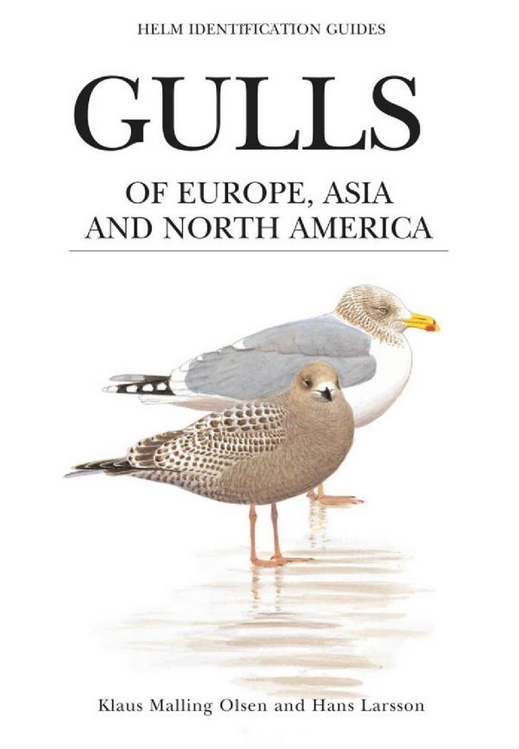
Malling Olsen, Klaus, and Hans Larsson. Gulls of Europe, Asia and North America. Helm Identification Guides, 2004.
Moores, N., Kim, A. & Kim R. 2014. Status of Birds, 2014. Birds Korea Report on Bird Population Trends and Conservation Status in the Republic of Korea. Published by Birds Korea, September 2014. Available at http://www.birdskorea.or.kr/Habitats/Yellow-Sea/YSBR/Downloads/Birds-Korea-Status-of-Birds-2014.pdf (accessed 10 Feb. 2023).
van Dijk, Klaas, Sergei Kharitonov, Holmer Vonk, and Bart Ebbinge. “Taimyr Gulls: evidence for Pacific winter range, with notes on morphology and breeding.” Dutch Birding 33: 9-21. Available at http://gull-research.org/papers/gullpapers1/Taimyr_Gulls_Dutch_Birding33_2011_pag9_21.pdf (accessed 10 Feb. 2023.

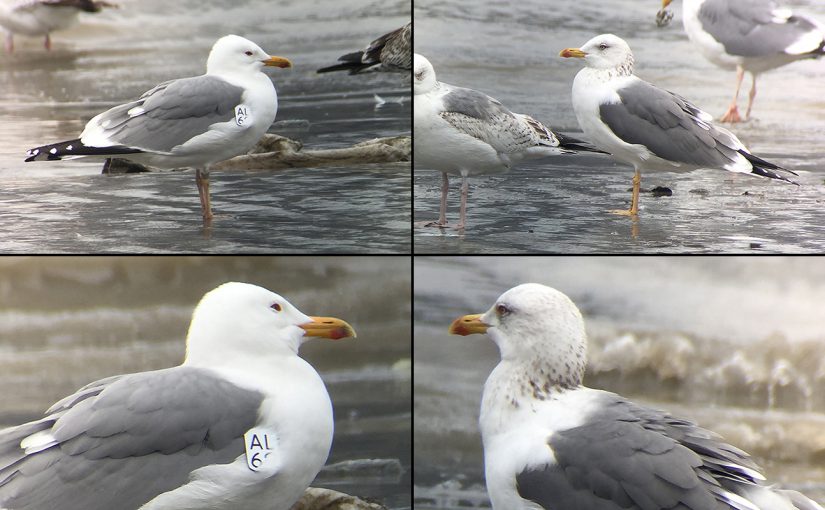
Thank you! Very inspiring. Maybe I was lucky not to have Nial’s paper when I lived in Beidaihe: Then I might have spent all my time at Sandflats …
I’m trying to figure out a gull that flew directly overhead in Penticton, Canada and the closest I have come is from an article on your website by Nial Moores. He said that the Taimyr Gull was similar to the Herring Gull in that they both had white windows at the juncture of the primaries and secondaries. The bird I saw was similar to a Herring Gull but had huge, bright windows closer to the body so maybe just in the secondaries. I have never noticed windows in Herring Gulls before. Photos on the internet show a little white on the trailing edge. I saw a square of light on both sides of the body of 4 to 5 feathers. Are the windows more prominent in Taimyr Gull than in Herring Gull? Thank you for your help on this!
***and many of the young will have fledged by early June***
… but where is it (in Mongolian Gull) ? It seems me too early. Our region is not the warmest one within the breedng range of Mongolian Gull, of course, but in early June its chicks only hatch.
Very good article about taymirensis and mongolicus